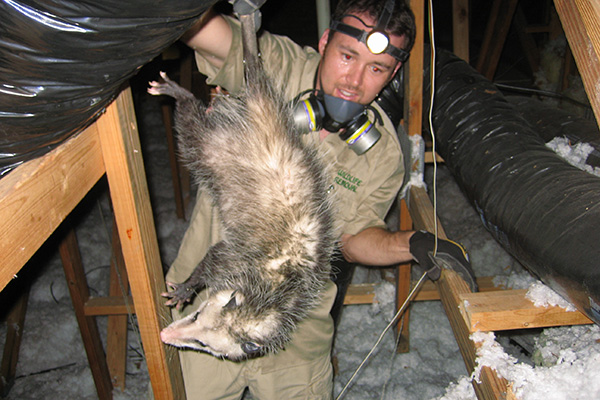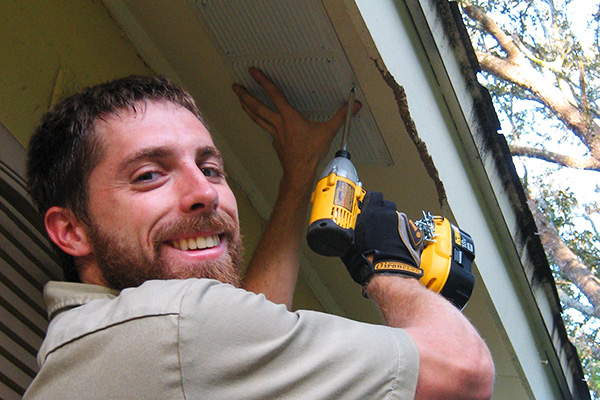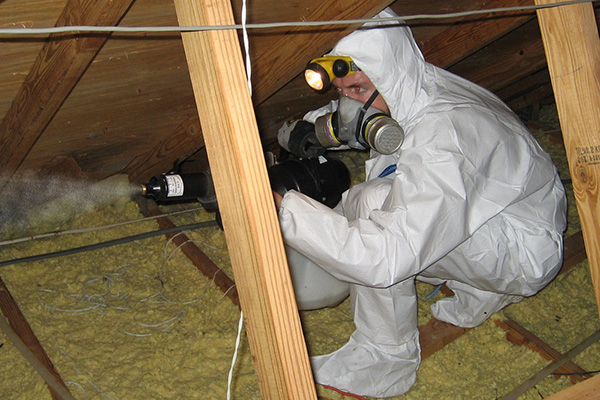- info@animalatticpest.com
- Call - we service 300 locations

Do It Yourself Instructions to Get Animals Out of the Attic
Can you do it yourself? Can you successfully remove animals from the attic on your own? Yes, you can do it yourself with careful research, and a very diligent approach to do it correctly. Before you start, I do want to say that
the removal of animals from the attic is not simple. You are dealing with wildlife, and each type of animal behaves differently, especially given the specific time of year. There are so many variables. Your best bet is to identify
which animals you have in your attic, and then read the specific guide I wrote for that animal. Many animals live in attics. You may already know what type of animals you have, if you have seen them. If you don't know, the
type of noises is a big clue, as is the type of feces you see in the attic. Look at the tracks in the insulation, and the type of damage. You might actually see the animal, but
that's rare, because they usually hide very well. Read my How To Identify the Animal guide for more advice.
Once you know what species of critter is in your attic, read about that animal here: squirrels, raccoons, rats, mice,
bats, opossums, snakes, birds, flying squirrels. There are other animal species as well, but these
are the most common ones. I'll write general instructions below, but each animal requires a special approach specific to that animal, so your best bet is to find out what animal you have, and then click on that animal here to
read more about it. And for crying out loud, don't use animal repellents or animal poison, neither of which is effective in the slightest.
The first and most important key to solving a problem with wildlife in an attic is in finding the entry holes into the house. You must use a ladder to inspect every part of your roof and all your vents. Look for poorly screened roof vents,
or places where the soffit meets the roof, or eave vents, or wooden fascia boards that they can chew through. Look for chewing damage, brown fur grease, and animal tracks. Look for chewed out ridge cap vents, open plumbing stacks, or
a hole in the roof itself. Your home might have several entry areas. Next, get back in the attic, and you must inspect the attic and find the nest of baby animals, if you're dealing with raccoons or squirrels or opossums or birds. You must remove
the nest of babies first. Next, you need to either trap or exclude the animals, depending on species and situation. I advise you click on your animal above for specifics. You
must reseach the correct type of trap(s) to use in your situation, and buy them, and set them correctly. Only after you are sure all the animals are out, can you remove the traps or exclusion devices and seal the final holes. Read
about entry hole repairs. After
that, it's often a good idea to repair the damage in the attic, and clean the animal waste left behind. Read about attic restoration.
How to Do it Yourself - 4 How-To Steps
1 - Home & Attic Inspection
Inspect the exterior of the home, including the roof and all vents, to find out how the animals are getting in. Also inspect inside the attic to identify animal and damage.
2 - Remove the Animals
This process is not simple, and it varies considerably based on animal type and situation. You might use an exclusion door, or a cage trap, or removal by hand.
3 - Repair the Entry Holes
The job is not complete until you solve the source of the problem. Seal shut the entry holes, with professional grade repairs, or else the problem will happen again.
4 - Clean the Attic
In addition to repairing chewed electrical wires and damaged duct work, you might want to remove the animal feces, maybe the insulation, and decontaminate.
Information About DIY Attempts to Remove Wildlife From the Attic
DIY is not easy! Almost every amateur wildlife control attempt I have seen has resulted in failure or suffering for animals. Are you aware that a trap set inside the attic itself will never catch a squirrel, but will almost always catch an opossum? Are you aware that with squirrels you seal all but the primary exit hole? Are you aware that with raccoons you leave the hole open, but with rats you seal all the holes first? Do you know the time of year and when the different species give birth? And the legalities of trapping, including the time of year? It's very complex and experience in trap setting is crucial. There are so many small details. It's not as easy as plumbing or electrical work, which I consider simple do-it-yourself homeowner projects. I... just generally do not recommend do-it-yourself removal of wildlife from attics. You are of course welcome to try, and I do my best to explain how on this website. But if you need professional help, I have compiled a list of the best wildlife control experts in the USA, many of them personally trained by myself. We service over 95% of the USA population. Just call the guy in your city or town, and describe your problem, and you'll get a ballpark price quote and be able to schedule a same-day or next day appointment. Click here to hire a local pro to remove the wild animals in your attic for you
The Bottom Line
If your case is really simple, and if you're willing to do the research and very careful work, go for it! Just be aware of the likelihood of baby animals in the attic. If you encounter problems, then you might want to call in one of our professionals to help you - experience matters a great deal in the field of wildlife removal.




